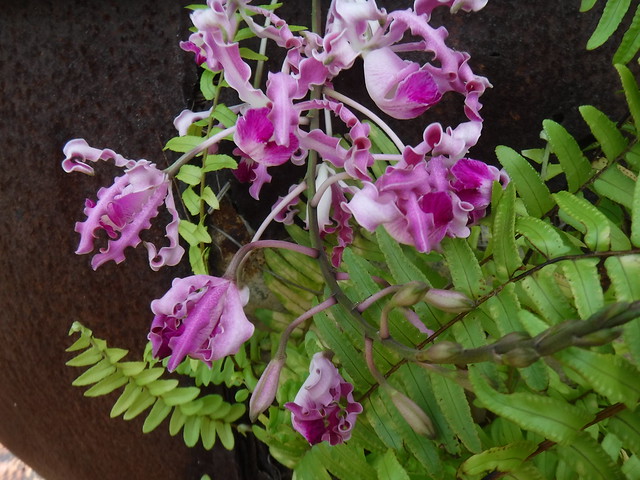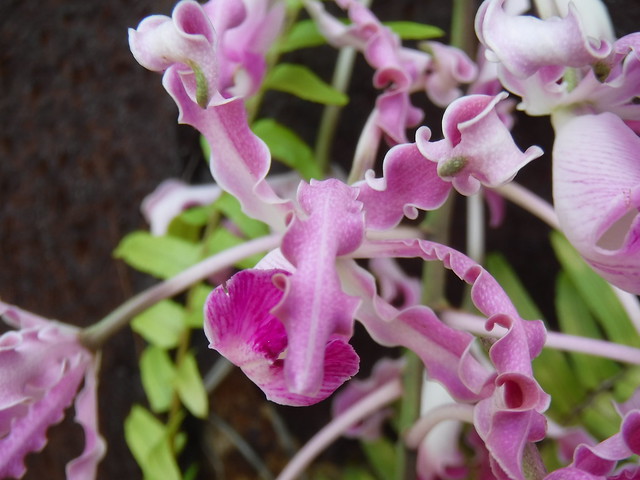One thing I love about living in Central America is the everyday encounters with exotic flora and fauna. I know that what is “exotic” to me is normal to the people who live here in the same way that North American birds and flowers that are normal for me would be “exotic” to them. We used to laugh, for example, when people would take manatee tours in the Indian River Lagoon—we would hear the vacationers screaming, “Look! A manatee!” as they nearly tipped the boat in their eagerness to photograph a slow-moving sea cow. We saw these gentle animals in our back yard nearly every day and became inured to them. To be fair, my friends in Panama laughed when I would stop by the same tree every day to look up to see what the sloth was up to (usually sleeping in the same place as the day before, but sometimes, gasp, it was scratching!). I never got tired of looking at this strange animal, but this strangeness and newness is part of why we travel. Nature is full of surprises—even when you’re used to the surroundings, a closer look always inspires wonder and awe.
On the way home from an afternoon out with Jay here on the Rio Dulce, we stopped to take a closer look at a tree surrounded by a cloud of pink blossoms. We idled over in our dinghy and realized that the flowers were not part of the tree, but were growing attached to the trunk, that they were, in fact, orchids. They were beautiful—with ruffled pink/purple petals and a deep magenta throat. I snipped a small cluster to bring home and show the kids and to see if I could identify the type of orchid. Suddenly, ants were crawling all over my hand and down my arm—the orchids were teeming with them. I gave the flowers a quick dowsing in the river and brushed the ants off my arm. I felt bad for having so thoughtlessly disturbed the flowers and their residents and regretted not carrying the good camera so I could have captured a closeup of the flowers without taking them off the tree.
My initial research made identification seem a difficult, if not impossible, task—there are over 1000 species of orchid in Guatemala, and there are several books and identification guides to enthrall the orchid-lover. There is even an annual orchid festival in Antigua, Guatemala every year, and many viveros which sell them to collectors and gardeners from around the world. I looked through pages and pages of images, and with a little patient digging, I was able to narrow down what kind of orchid I had. And it made perfect sense. The genus is myrmecophila: myrmex meaning “ant” and “philos,” love. These orchids and ants share a mutual affection for each other—they are, in fact, symbiotes.
Myrmecophilia (exaltata?)
I found a lovely article written by Ivan Gabaldón, whose curiosity about this phenomenon led him to closer observation through macro-photography of ants and orchids. He had done his own research and interviewed conservationist Joann Andrews in Mexico. She describes the relationship thus: “the ants help the flower bloom, defend the plant from herbivores and take up residence in its bulbs, where they store dead insects that in turn provide protein for the orchid. The reward for the ants is to feed on the orchid’s nectar.”
Further reading reveals another mystery: the ants are not the primary pollinators for the orchids, rather, each species of orchid produces its own signature fragrance that attracts flying insects—a different kind of bee for each orchid.
How often do we zoom past such wonders in our hurry to get somewhere or to do something? A microcosm, mysterious and beautifully complex, lies within our reach, but unless we slow down and take the time to look, and to study what we see, we miss it entirely. Perhaps this is the best gift nature offers us: the chance to pause in our busy-ness and get a different perspective, to notice and appreciate something new and strange.
For more information on orchids in Guatemala:
Ivan Gabaldón’s article, “On the Miracle of Orchids and Their Love of Ants” from www.rideintobirdland.com.
James Bateman’s book, Orchids of Mexico and Guatemala (updated by John A. Denson in 2010, Lulu.com).
Oakes Ames’ and Donovan Stewart Correll’s Orchids of Guatemala and Belize (1985, Dover).


